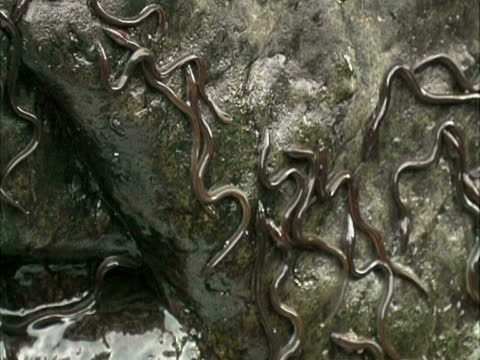By Dane Lorica, | October 10, 2016

A new study has shed light on the migratory behavior of eels.
A new study has solved the puzzle of the inexplicable lifecycle and migration of European eels.
Eels are commonly found across the seas of Europe. They are described as non-picky eaters and flexible inhabitants of estuaries, rivers, streams, and lakes.
Due to the mysterious lifecycle of European eels (Anguilla anguilla), they are listed under the critically endangered category of the official IUCN Red List of Threatened Species.
Like Us on Facebook
It is believed that eels stay for a long time in freshwater before their migration to their presumed breeding area in the Sargasso Sea. They travel approximately 5,000 to 10,000 km, making some wonder where the species came from.
Aristotle claimed in the "History of Animals" that these animals reproduce through spontaneous generation. He averred that eels are related to earthworms. One of the facts supporting this claim is that in some pools, eels appear after rainwater and mud were drained. Meanwhile, they are absent during drought which may conclude that they exist in rainwater.
Danish scientist Johannes Schmidt attempted to uncover the secret of the eel's mysterious lifecycle during the 20th century. He identified the southern Sargasso Sea where he found the youngest larvae of the species.
Now, with the help of GPS, a team of researchers headed by David Righton have been able to map the migration routes of eels. The study that lasted for five years involved 707 eels with attached tags. Data revealed that a majority of the tagged eels were immediately devoured while 87 managed to survive.
The study by Righton's team, which was published in "Science Advances," highlights the journey of eels to the Azores. It was also revealed that eels demonstrated vertical migrations everyday, from deeper water during daytime to a shallower area at nighttime. The team also measured that the speed of these species ranges from 3 to 47 km per day.
These findings on eel migration are expected to aid scientists and advocates to increase the survivability and rate of reproduction of the endangered animal.
-
Use of Coronavirus Pandemic Drones Raises Privacy Concerns: Drones Spread Fear, Local Officials Say

-
Coronavirus Hampers The Delivery Of Lockheed Martin F-35 Stealth Fighters For 2020

-
Instagram Speeds Up Plans to Add Account Memorialization Feature Due to COVID-19 Deaths

-
NASA: Perseverance Plans to Bring 'Mars Rock' to Earth in 2031

-
600 Dead And 3,000 In The Hospital as Iranians Believed Drinking High-Concentrations of Alcohol Can Cure The Coronavirus

-
600 Dead And 3,000 In The Hospital as Iranians Believed Drinking High-Concentrations of Alcohol Can Cure The Coronavirus

-
COVID-19: Doctors, Nurses Use Virtual Reality to Learn New Skills in Treating Coronavirus Patients







